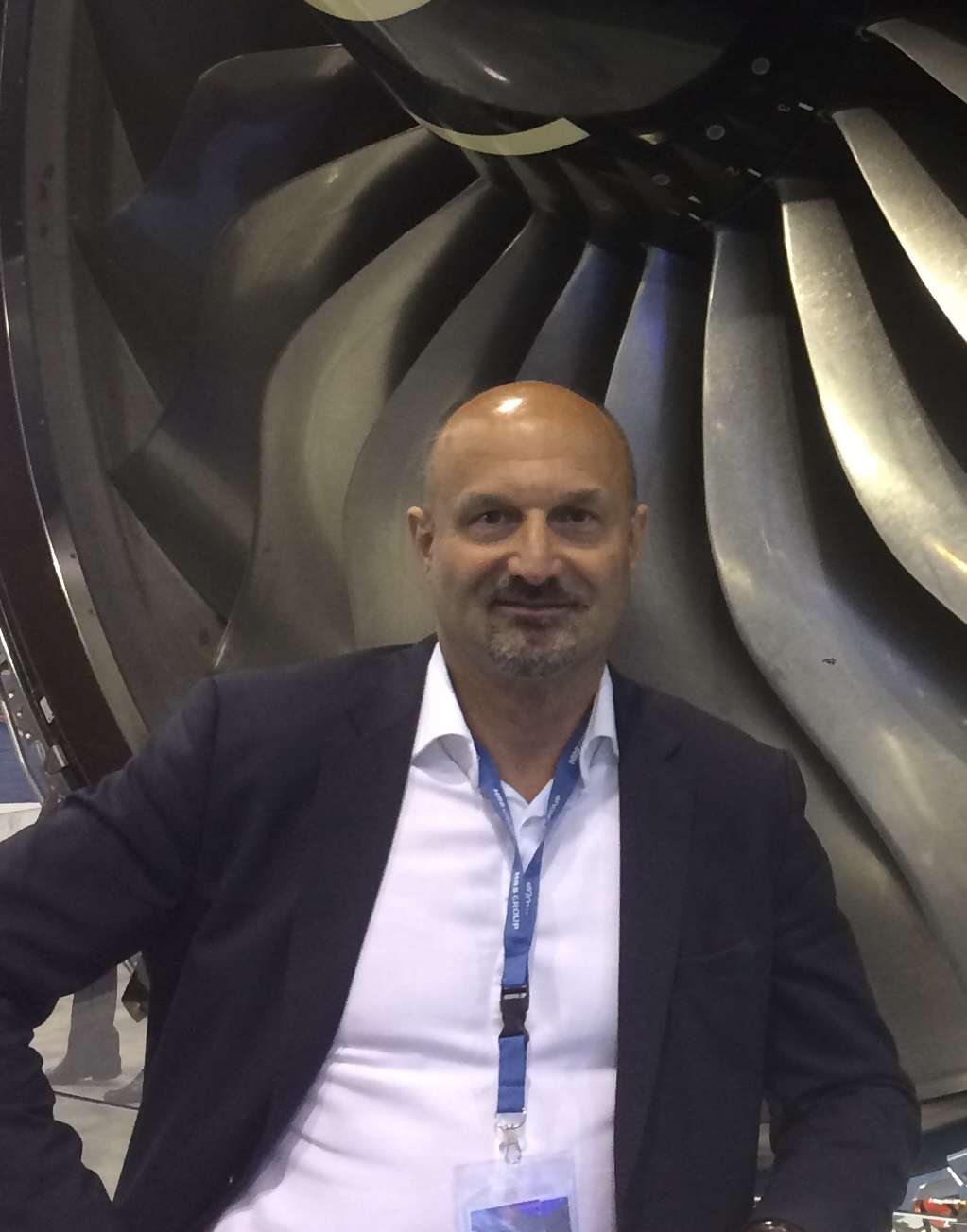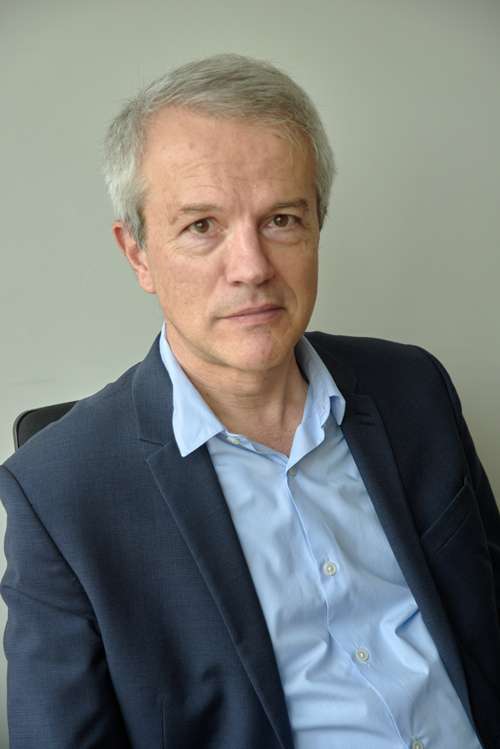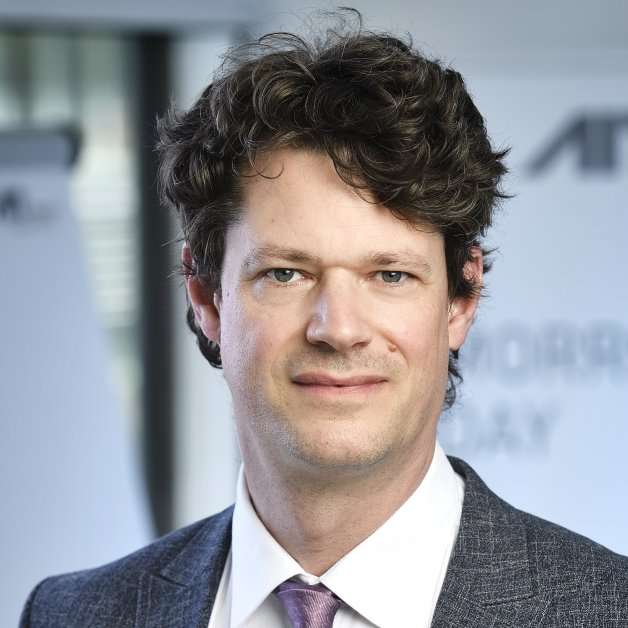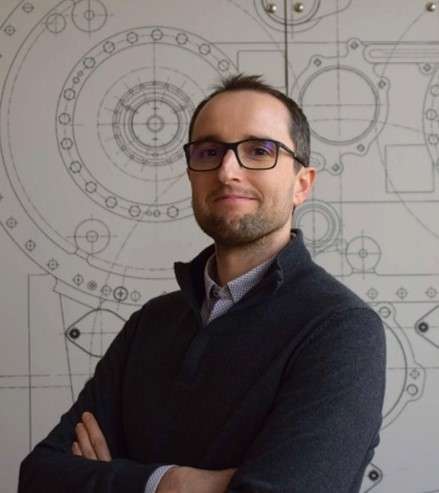Interviews

Philippe NOVELLI, Project Coordinator
Program Director - Aeronautic Propulsion & Environment at ONERA - The French Aerospace Lab
2020 Jun
With a view to the very high ambitions of the aviation sector in terms of reducing CO2 emissions, IMOTHEP represents a major step in assessing the actual potential of hybrid-electric propulsion, a dramatically disruptive technology for aviation.
Applied to commercial aircraft, this implies embarking on board aircraft unprecedented electric powers, even beyond those currently used on high-speed trains. This is an incredible challenge, involving a complete overhaul of aircraft and propulsion system architectures as well as the development of new technologies for electric components and architectures. Power densities of electric machines and components have to be drastically increased, while specific physical problems have to be tackled such as arcing due to high altitudes and voltages, or electromagnetic compatibility and thermal issues.
A powerful multidisciplinary consortium has been assembled in IMOTHEP to address these challenges. It gathers major industry partners (airframers, engine and electric systems manufacturers) and research organisations from eleven countries ensuring close exchanges between research and application with a view to an efficient transfer of research results to a concrete implementation for next-generation aircraft. Both regional and short-medium-range aircraft will be investigated to provide a complete view of hybrid-electric potential and range of application.
IMOTHEP will also reach out to its sister projects, with the ultimate goal being to identify promising aircraft and propulsion system configurations with the associated component technologies, and to develop a sector-wide European technology roadmap for hybrid-electric propulsion.
Acting as a hub for other European initiatives, IMOTHEP is an exciting collective undertaking for the next four years and for making aviation more environmentally friendly.

Philippe NOVELLI

Hugues FELIX, Project Officer
CINEA – European Commission
2020 Jun
Aviation is inherently and increasingly growing international. Aviation has a global impact on the atmosphere, and vice-versa.
Aviation emissions in the atmosphere are increasing. At the 2015 Paris climate conference (COP21), countries agreed to limit climate change to well below 2 °C. Without a considerable contribution from the aviation sector to global mitigation efforts, this goal cannot be achieved.
Regarding aircraft technologies, it is necessary to develop future aviation propulsion and integration technologies with emphasis on hybrid-electric and full-electric propulsion. There is also a need for establishing a common roadmap and prioritizing the key enabling technologies for hybrid-electric configurations in the aviation sector, including energy storage (batteries).
IMOTHEP will achieve a key step in assessing the potential offered by hybrid-electric propulsion (HEP) and, ultimately, build the corresponding sector-wide roadmap for the maturation of the technology.
The project ist quite ambitious, with some hard work to be done, but I trust the involvement and complementarity of the members of the consortium to turn IMOTHEP into a great success.

Hugues FELIX

Philippe NOVELLI
Project Coordinator, Program Director - Aeronautic Propulsion & Environment at ONERA - The French Aerospace Lab
2020 Nov
Beyond the dramatic human impact, the COVID 19 pandemic has severe consequences for the economy and impacts the aviation sector especially hard. In a possibly unexpected manner, this increases the focus on the environmental impact of commercial aviation and the pressure on aviation stakeholders to reduce their greenhouse gas emissions.
As the current crisis calls for supporting measures for the sector, these are being tied to the setting and achievement of ambitious emission reduction targets, to be supported by unprecedented research efforts. This happens to be the exact focus of the IMOTHEP project, which represents a major research step in assessing the actual potential of hybrid-electric propulsion for reducing fuel consumption and CO2 emissions.

Philippe Novelli

Sébastien DEFOORT & Jos VANKAN
ONERA & NLR
2020 Nov
To which extent does HEP propulsion revolutionize commercial aircraft design?
Sébastien: In the search for higher efficiency (especially less fuel burn and less emissions), the incremental progress in aircraft optimization are unlikely to bring the necessary reduction (30 to 50% less CO2 emissions) to achieve carbon-neutral aviation. Among the disruptive technologies on the table, hybrid-electric propulsion (as more commonly used for cars nowadays) is one of the most promising – though not the only. Progress in power components may make it possible to reach a higher degree of aviation decarbonisation, provided that we are able to integrate them on operational concepts. This offers new freedom to the designers, enabling a positive snowball effect regarding aeropropulsive integration.
Jos: Hybrid-electric propulsion allows for different solutions in aircraft design than conventional propulsion. A key factor for this is the scalability of electric equipment. Conventional propulsion by fuel combustion, where gas turbines are most commonly used, typically scales not very well for fuel efficiency and specific power: larger gas turbines are more efficient and have higher specific power than smaller ones. This means that aircraft design optimisation tends to minimize the number of gas turbines, and with that, the number of propulsors. Energy efficiency and specific power of electric motors depend much less on their size. This allows for more freedom in aircraft design for the layout of the propulsion system: for a certain required propulsive power, many smaller electric motors are comparable in weight and energy efficiency to one or a few large electric motors. This is one of the reasons why hybrid-electric propulsion makes new propulsion concepts, like distributed propulsion and boundary layer ingestion, more attractive design solutions.
What is the added value of such a large cooperation to address this challenge?
Sébastien: HEP brings opportunities but also new problems to tackle, such as electromagnetic compatibility, thermal management, redundancies…That is why a new kind of expertise needs to enter the play of aircraft design, on top of classical disciplines such as aerodynamics, turbomachinery and structural analysis. Moreover, a lot of uncertainty still remains on the maturation speed of these HEP technologies, which can have a deep impact on the expected benefits (as we observed for example at ONERA when studying the HEP / distributed propulsion concept DRAGON within the Clean Sky 2 project).. The idea behind the IMOTHEP consortium is to bring together this expertise in performance and integration of electric components from new partners, and cross their inputs with experienced aircraft designers and manufacturers from several horizons. We can then expect to have a robust evaluation of the real potential of HEP, and a shared view on the next steps.
Your design approach includes three successive iterations. Please explain the rationale of this methodology.
Jos: Workpackage 1 consists of three successive integrated design loops (conceptual design; multidisciplinary design; detailed design) of the different vehicles that are considered (REG/SMR). The reason for this is, firstly, that the design of complex products is commonly performed in an iterative way in order to gradually incorporate more detail into the modelling and analyses that are applied. This allows to make the right decisions at the right time: early in the process choices must be underpinned by relatively simple and quick preliminary analyses that can cover a large design space, while later in the process more precise choices must be made based on more detailed and very specific analyses. Secondly, in IMOTHEP this iterative design methodology allows to progressively incorporate the developments made in the “Systems WPs” (WP2,3,4,5) on the vehicles’ subsystems into the global performance assessments of integrated HEP aircraft in the successive design loops, avoiding a blind, separated work of aircraft designers on the one hand, and HEP architecture on the other hand, replaced by a tightly coupled process. Moreover, efficient exchange of information among the different WPs in IMOTHEP can be well organized through a series of three large project-level meetings, one for each design phase.
From your views, compared to current aircraft, will HEP enable similar performances in terms of range and payload?
Sébastien: In our design exercise, the first assumption is to aim at similar performances as the current references (ATR-42, A320 neo for example). The idea behind this is to deviate as little as possible from the current operational use of the aircraft, not to introduce biases in market analyses. But we know from previous studies that these TLAR are challenging, and that we might encounter difficulties to converge suitable concepts, especially due to the mass of the electric architecture. That is why the passenger and range requirements will be reviewed throughout the project, with the advice of aircraft manufacturers on board the project. Apart from the technical point of view, the current challenges that aviation is facing might also be in favour of a revision of operations!
Jos: Compared to the current state of the art aircraft, the performance of HEP aircraft in terms of range and payload is expected to be a bit lower, but at a bit higher fuel efficiency. HEP does allow improvement of the overall transport energy efficiency (“amount of payload transported over a certain range per amount of energy required to do so”), but it requires a really delicate balance of components (energy carriers, energy transporters, energy transformers, propulsors) and adapted aircraft configuration to optimize this efficiency for certain mission requirements. An important advantage of HEP is that it allows for better emission management: emissions in certain flight phases (typically close to airports and urban areas) can be reduced, potentially at the cost of increased emissions in less sensitive flight phases.

Sebastien Defoort

Jos Vankan

Marc MAUREL & Giovanni TROIANO
AIRBUS & LEONARDO
2020 Nov
More than ever, reducing emissions is considered as crucial for aviation future. Which are the main benefits you are expecting from Hybrid Electric Propulsion to achieve this goal in your respective market segments?
Common answer: The European Green Deal (EGD) proposed by the European Commission will include the first European Climate Law to confirm the 2050 climate-neutrality objective in legislation. We have the task to develop and introduce safe, reliable, and affordable climate-neutral air transport for citizens then matching such a challenging objective.
To achieve these strategic goals, the global aeronautical community shares that a full review of the way we use the energy onboard is necessary. The analyses performed, demonstrate the need to combine all technologies available for propulsion, aircraft design, energy production, and distribution as well as the need to develop suitable new infrastructures and figure out a set of new operative and qualification rules. The air mobility climate-neutral solutions may also lead to new mobility opportunities mainly in the short-range below one-hour flight and new intermodal solutions. This may open up also new business opportunities. The aggressive use of those new technologies within suitable new aircraft configurations - for instance, Distributed Electric Propulsion (DEP) is an option studied in IMOTHEP to optimize thrust and reduce drag -, may fill the gap between what is achievable by the evolution of traditional aeronautical technologies and what is required to get climate-neutral air mobility. The Hybrid/Electric propulsion (HEP) appears to be the more concrete solution for short-range and regional safe, fast and flexible mobility to achieve the climate-neutral aerial mobility envisaged in EGD.
The potential key benefits from the HEP are two-sided. On the technical side, HEP allows aircraft designers to de-couple energy generation from propulsion placing the second where most effective to reduce drag and maximize thrust. Then, electric machines' intrinsic features allow to smartly sizing powertrain right to power needs reducing oversize. Both opportunities are paramount for the regional, and short-range in general, flights where take-off and climb are a large share of the flight stage. Of course, electrical energy storage, distribution, and management are key enabling issues to solve.
Complements A1 (AIRBUS - SMR):
Changes in propulsion systems will come earlier than we imagine using more hybrid-electric propulsion and alternative fuels.
Hybrid configurations and alternative sustainable fuels are important milestones to reach carbon-neutral growth. In this aim, Airbus is developing associated technology bricks in-house and with partners via national and European collaborative frames such as Clean Sky 2. “Airbus’ duty is to constantly evaluate and reprioritize them to assure alignment with our ambition”, Airbus CTO Grazia Vittadini said.
According to Flight path 2050 goals, the estimated CO2 emission reduction is about 30% compared to 2014 in-service short-medium range aircrafts and same targets are expected for NOx and noise reduction.
Complements A1 (LDO- regional):
The reduction of the emission would be achieved through a combination of measures that includes hybrid-electric propulsion architecture, improved aircraft efficiency, and the use of sustainable aviation fuel. The estimated emission reduction for regional aircraft is up to 50% compared to in-service products and, coupled to the use of sustainable aviation fuel, the achievable reduction could be up to 80%.
HEP is not limited to configurations and integration but also relates to electric technologies (electric, power electronics, electric sources…). How do you see the step with commercial aviation? What are the possible projections of the current achievements for regional and SMR applications?
Giovanni: New aircraft configurations exploiting the potential of electrical technologies and propulsion solutions are the core for HEP feasibility. The technological step is huge for aeronautics, and for electrical technologies too. The MW range suitable to regional aircraft is the first target for such global effort fulfilling the severe regulation and operative environment common to SMR and larger aircraft. It will bring three benefits: first) it will allow innovative electrical propulsion architectures to enter in service by 2035; second, it will enable climate-neutral, smart and safe regional and short-range aerial mobility, complementary to surface transport; and third, it will be a building block for further electrification of larger aircraft.
Beyond emission reductions, can you identify additional potential advantages of HEP, for instance regarding noise, possession costs (or “total costs of ownership”)?
Common answer: From the cos” perspective, HEP solutions may lead to a new balance between maintenance costs and those directly related to the mission, such as block fuel, airport fees, and fuel taxes. It is possible that HEO technologies will enable a “green rewards card”, in parallel to what is happening in other sectors, linked to national and global policies pushing for an eco-bonus on environmental-friendly solutions. In the end, climate-neutral air mobility - namely HEP - may require a new lifecycle assessment based on safety, emission and the operative cost fairly different from the current one based on safety, flexibility, and operative cost.

Marc Maurel

Giovanni Troiano

Dirk ZIMMER
Head of Team for Aircraft Energy Systems | Deutsches Zentrum für Luft- und Raumfahrt e.V. (DLR)
2021 Jul
DLR’s role in electrical architecture is central in IMOTHEP. What are the stakes of this activity, and how does it fit in with the other building blocks of the energy chain, particularly in terms of electric components and energy generation?
The role of the electrical architecture is to connect the sources and storages of electrical energy with the respective consumers, which are essentially propulsors, but also secondary systems. A key objective is to identify the optimal level of redundancy in the distribution grid so that safety is ensured while the component oversizing is limited.
Designing electrical architectures is a very multi-faceted work. Fortunately, IMOTHEP allows us to collaborate with competent industry and academia partners. DLR’s role in IMOTHEP is two-faced: Firstly, we integrate with the overall aircraft design and provide feedback on its impact on weight, drag and power off-take. Secondly, we check with the domain specialist whether the individual components of the architecture meet the requirements and include the latest component design in our architecture. In this way, we establish important interfaces between component designers, architecture analysts and overall aircraft designers and identify the most relevant trades across the different domains.
Please describe the necessary multi-physics (electromagnetic, mechanical, thermal) approach for electric chain integration.
By nature, electric architecture and component design is a multi-physics task. Even in classic power electronic and motor design, the thermal design imposes critical limitations. For instance, a higher operation temperature benefits the cooling effort, but it also decreases the component efficiency and reduces its lifetime.
When we consider complete electric chains in aviation, the multi-physics aspect is enhanced: design goals such as reduced mass and volume of the component are much more pronounced in aviation than in other fields. Furthermore, implications arise from the operation of the electric chain at high altitude which complicates the electric insulation and the cooling task. From the mechanical perspective, the design of both aerodynamic fan and motor is impacted by two key parameters: the geometry of the electric machine and the speed of the drive shaft. As stated before, providing sufficient redundancy is relevant for all domains and needs to be analysed across domains. There is less demand for a redundant electric connection when the propulsors are sufficiently redundant as in a scheme for distributed propulsion.
Several DLR institutes are involved in IMOTHEP; DLR participates in almost all activities of the programme. Especially in terms of conceptual design, why is there such a strong need for cooperation among European stakeholders? Why is DLR engaging to such a degree in IMOTHEP, and what are the links with other projects conducted internally and nationally?
Helping to make aviation more environmentally friendly is one of DLR's primary research targets. This includes the reduction of greenhouse gas emissions, with emission-free aviation representing the ultimate goal. Hence DLR has strategically expanded its activities in key topics such as propulsion technology, noise reduction, electric integration, fuel cells, and overall aircraft design. DLR finances these activities partly out of its own resources, but also thanks to funding by the European Commission with Clean Sky 2 projects such as ADEC and Hyper-F. We are glad to be able to contribute to IMOTHEP with these competencies.
In Germany, much attention is paid to hydrogen-powered solutions. The DLR project EXACT investigates the potential for hydrogen combustion as well as for fuel-cell integration. In contrast, IMOTHEP focuses rather on hybrid-electric technologies and their aero-propulsive integration. For DLR, it is vital to maintain and enrich our capability to evaluate all potential pathways to a more sustainable future.
The strong network of highly competent European partners is a major benefit of IMOTHEP and needed to find a common answer to a common problem. Cross-checking the results with our European partner organisations from EREA is a vital step in terms of concept validation. Industry partners are essential to efficiently improve the readiness of technology. We aspire to be able to contribute to making greener aviation concepts available soon.

Dr Dirk Zimmer

Catherine CLARK
P.Eng., Research Officer (Aviation Aerodynamics), Aerospace Research Center | National Research Council Canada (CNRC)
2021 Jul
Please outline CNRC’s view on the HEP technology for aeronautics and to what extent the cooperation in IMOTHEP matches your roadmap on that topic
Recognizing the impact of climate change and the need for the aviation industry to play a role in reducing emissions, the CNRC Aerospace Research Center recently started a Low-Emissions Aviation Program (LEAP) to focus research effort and budgets in that area. One of the master projects within this program is vehicle-level technology integration, with the goal of developing, optimizing, and integrating low-carbon technologies safely into aviation applications. This master project fits well with the IMOTHEP consortium goal of reducing commercial aircraft emissions with hybrid-electric propulsion systems. Although we are currently focusing on BLI (Boundary Layer Ingestion), I expect we will see many more areas of overlap and opportunities for collaboration between IMOTHEP and the CNRC as the program continues.
The first topic that has been identified for cooperation in IMOTHEP is BLI. Please explain the recent experimental and numerical work pursued by CNRC on this topic and the motivation to join forces with European partners.
CNRC has been working on developing our BLI capabilities for a few years, primarily through our ENVELOPE (Engine Inlet VELOcity Profile Effects) project, which is an internally funded project with CNRC’s Aerospace Future Initiative’s program. ENVELOPE is working with multiple industry partners to evaluate radially distributed BLI into a tail-mounted engine using a scaled fan in one of our smaller engine test cells. Work to date has included the development of a system to artificially thicken the boundary layer and the commissioning of a wind tunnel structure for the engine test cell to provide the required flow rates and profiles. Commissioning tests are continuing this summer, with the full test program planned for this fall (it was delayed from last year due to COVID).
In general, the involvement of CNRC in European aeronautics projects is sensibly increasing (for instance in SENS4ICE). In which particular research areas does your organization envisage further cooperation with European partners?
The CNRC really has some unique facilities, particularly our wind tunnels and engine test cells. As mentioned, we have cooperated with the EU for the SENS4ICE project with our world-class altitude icing wind tunnel and research and technical staff that run the facility. I think we will continue to see cooperation increasing for reduction of carbon emissions, as it is a global issue and there is a lot of areas for improvement and research there that the CNRC excels at, from materials to simulations and testing. The CNRC is more than just the Aerospace Research Center, though, and has 14 research centers across Canada that specialize in everything from aquatic and crop resources development to nanotechnology, so I am sure there are many opportunities for collaborations with the EU that I am not even aware of.
The cooperation with Canadian partners has been reinforced through the recent association of the University of Toronto (UTIAS) to IMOTHEP. What are the areas of collaboration between CNRC and UTIAS and how will it benefit the IMOTHEP project?
A comprehensive evaluation of Canadian universities was completed by the CNRC last year, with the goal of selecting a university as a strategic partner for the CNRC. UTIAS came out as the partner of choice based on numerous factors, including resources, expertise, and publications. For this project, UTIAS has experience with and developed their own capabilities for the simulation of ducted flows into engines. Their capabilities are well-suited to being adapted to BLI flows, with the CNRC as a partner to provide experimental validation data. The results of this work will be used to support IMOTHEP’s work package two, Aeropropulsive Design, where we are looking at the design and performance of the propulsion system.

Catherine Clark, NRC

Dr Helmut KÜHNELT
Senior Research Engineer | Electric Vehicle Technologies | Center for Low-Emission Transport | Austrian Institute of Technology GmbH (AIT)
2022 Apr
Batteries are fundamental to the success of hybrid-electric architectures. Which emerging battery technologies and materials have been identified within IMOTHEP?
The hybrid-electric architectures developed in IMOTHEP are targeting regional aircraft with a capacity of about 50 passengers. One key requirement for electrical energy storage are cells with an ultra-high gravimetric energy density of around 400 Wh/kg and beyond to overcome the weight penalty, which is about twice the density of current-generation high-energy cells. Next-generation battery cells will use energy-dense active materials, NMC (nickel, manganese, cobalt) on the cathode side and high-content silicon or lithium metal on the anode side, together with a variety of electrolytes, from non-organic liquids to gels to various types of solid-state materials (oxides, sulphides, polymers, etc.). This opens a wide range of material options.
As these advanced batteries are still under development, there is an immanent lack of fundamental data for aircraft design. Thus, in IMOTHEP, we aim to provide such a design basis and also a technology outlook for batteries that could be deployed within the timeframe of the aircraft development cycle, i.e. until 2030+, as the new aircraft are expected to enter into service by 2035+. Our focus is on all-solid-state batteries with hybrid polymer-ceramic solid electrolytes that are simpler to process compared to purely ceramic or sulphide solid electrolytes.
What methods do you use to evaluate these future battery technologies?
In IMOTHEP, the partners AIT and KIT (Karlsruhe Institute of Technology) collaborate, pursuing a coupled experimental/numerical approach. With lab trials on coin cells, AIT evaluates various material and processing options, e.g. tuning the solid electrolyte composition, and generates characterisation data, while KIT applies electrochemical cell modelling to investigate and optimize the battery cell composition with respect to aeronautic requirements. Developing larger aeronautic battery cells is beyond IMOTHEP’s scope but would be a necessary next step.
How do you interact with industrial partners (aircraft manufacturers and first-tier suppliers) in IMOTHEP to meet the project objectives?
In IMOTHEP, we work closely with the design owners of the two regional aircraft configurations, BHL and DLR. The aircraft manufacturers provide the top-level aircraft requirements and will later act as integrators. In future aircraft, the battery will be one subsystem of the hybrid powertrain. As high-capacity propulsion batteries are a novelty for commercial aircraft, a feedback loop between the aircraft industry, research and EASA is being established within IMOTHEP to discuss the implications of these technological developments on aircraft certification.

Dr Helmut Kühnelt

Jesús LÓPEZ RUIZ
Preliminary Design and Hybrid-Electric Engineering Manager | GE Avio
2022 Apr
In IMOTHEP, you lead the activities related to ENERGY GENERATION. Which energy generation systems are considered within IMOTHEP?
The partnership looks at various systems for energy and power generation onboard aircraft. The main configurations studied are turbogenerator systems, meaning gas turbine engines connected to an electrical generator to transform the mechanical power delivered by the engine into electrical power. Several IMOTHEP partners collaborate to develop and study the gas turbine and generator components and their integration. We are also developing activities on Lithium-based battery systems through a combination of experimental technology work and analytical modelling, as well as feasibility studies on hydrogen-based fuel cell systems.
Does the inherent interdisciplinarity entail any challenges?
Indeed, interdisciplinary collaboration brings some challenges, but also many benefits, I would say. The diversity of disciplines and skillsets required to design and study energy generation systems for hybrid aircraft propulsion systems is quite large, involving many partners, ways of working, and expertise.
In practice, this means challenges that start with coherent communication between partners and teams spread across the EU and expand to the proper flow-down of technical requirements and sharing of results between disciplines.
Despite these difficulties, the interdisciplinary and collaborative environment of IMOTHEP provides considerable value in terms of continuous learning between entities and enables the development of a deep understanding of the technologies under study thanks to the specific expertise that each partner brings from different areas, which would be difficult to acquire without a collaborative approach.
What criteria do you use to evaluate the energy generation systems for the four aircraft configurations investigated in IMOTHEP with regard to the Clean Aviation targets for 2035?
We evaluate systems in terms of their efficiency and sustainability, for instance in terms of fuel or energy consumption, which can be linked to CO2 emissions, and what technologies we need to ensure that the propulsion system meets the environmental targets. Each aircraft version studied has specific characteristics regarding energy demands throughout the mission, so the technologies and the required push from the current state of the art may be somewhat different in some cases. Therefore, we try to aggregate the general technical requirements to outline the energy and power generation technologies that are critical to the sustainability of the overall propulsion system, such as what type of battery or gas turbine technology is required for a more sustainable propulsion system.

Jésus López Ruiz

Somayeh TOGHYANI
Karlsruher Institut für Technologie (KIT) | Institute for Applied Materials - Electro-chemical Technologies (IAM-ET)
2023 Jun
In which IMOTHEP project activities is KIT involved and what exactly are your role and tasks?
Hybrid-electric propulsion systems containing batteries have the potential to reduce overall fuel consumption and decrease weight penalties. However, electrical energy storage systems require a higher capacity-to-weight ratio than today’s Li-ion batteries to meet the high demands in this area. Safety limitations imposed by liquid electrolytes motivate the development of next-generation chemistries, such as oxide-based all-solid-state batteries (ASSB) for aviation, which have non-flammable electrolytes. KIT's role in IMOTHEP was to investigate – in cooperation with AIT – the emerging ASSB technology suitable for future propulsion and aircraft power systems. AIT studied the ASSB technology at the coin cell level. KIT implemented AIT's experimental data into a numerical model to gain a deeper understanding of battery behaviour and their integration into electric propulsion. The physics-based model enables to build a platform that can quickly evaluate the effects of various electrolyte materials and different cathode compositions on battery performance as well as reveal the cell's limiting processes. Further, this model allows predicting the optimal design parameters of ASSB to attain a higher gravimetric energy density for aerial applications, which could help experimental research to improve cell design with more time and cost-efficiency.
Please briefly explain your recent results – what were the biggest challenges?
Investigation of the performance of several types of hybrid electrolytes with different percentages of inorganic oxide-based electrolytes showed that garnet-based hybrid electrolytes could be a promising choice for future aircraft based on current manufacturing limitations because they are more stable in contact with lithium metal anode and high-voltage cathode materials such as NMC811, which is required to achieve higher gravitational energy density. They also have higher ionic conductivity compared to other oxide-based hybrid electrolytes and can be manufactured in thin layers. However, due to the main obstacles of ASSB, namely the limited ionic conductivity of the electrolyte on the cathode side, they cannot operate efficiently at high C rates. Using a composite cathodic electrolyte with an inorganic liquid electrolyte, such as a highly concentrated liquid or ionic electrolyte in the cathode, was one of the options investigated to increase cell performance. The use of highly concentrated electrolytes as the cathodic electrolyte could significantly improve battery performance for energy-power-balanced hybrid-electric propulsion. The biggest challenge during numerical modelling was that experimental data of all required electrochemical properties for different electrolyte materials were not available, and comprehensive research was needed to extract them from the experimental literature. Further, numerical modelling of batteries with different electrolyte materials at the pack level was time-consuming, so we decided to consider the efficiency rate from the cell level to the pack level to calculate the gravitational energy density of the batteries.
What further development is needed for aviation battery cells?
The identified electrolyte significantly increases battery capacity; however, aviation battery cells need to be further developed to meet aviation goals, which include reducing weight penalties, improving battery safety issues, enabling deeper discharges with still high-power density, and allowing continuous fast charging and discharging. Future work for further development for the modelling of aviation battery cells may especially focus on the modelling of complexity inside the electrolyte, the contact area between electrolyte and electrode and capacity loss and also developing a model for ageing and safety.

Somayeh Toghyani

Christophe VIGUIER
Electrical Machine Expert | Electrical Systems Architect | SAFRAN TECH
2023 Jun
Safran Tech leads the research work within IMOTHEP in the area of electric components, which are at the heart of the hybrid-electric aircraft's propulsion system. What are the main challenges here?
Electric propulsion is a recent use case for electrical components in aeronautics, which has seen its rise in particular with the study of vertical take-off and landing (VTOL) aircraft. We are talking here about an Electric Propulsion Unit (EPU) composed by an electric machine, power and control electronics as well as interconnection elements. In the context of propulsion for aircraft as studied in IMOTHEP, the levels of mechanical power involved at the level of the EPUs is significantly higher; we are talking about several hundred kilowatts or even megawatt-class. This will depend on the aircraft configuration (one or more e-propeller), but the issues remain the same. It is necessary to be able to offer a system with a high specific power to minimize the overall mass, a high efficiency so as not to penalize the energy sources to be on board, and to control the thermal management of the electrical components while ensuring good reliability of the system. If the on-board powers increase, the amplitude of the voltage of the electrical network can also increase in order to minimize the mass of the electrical distribution. On this subject, an aeronautical specification, which is a constraint for electrical components, is the effect of altitude on the electrical properties of insulation materials. All these key points define the major challenges we face in exploring new technological bricks that will make up the electrical components and systems of tomorrow.
How do you see the role of superconductivity in this context?
The use of superconducting materials or the exploitation of a cryogenic environment for electrical components are potential challengers for high and very high power electric propulsion. This can apply to electrical machines and cables for superconductivity, and power electronics for cryogenics. Two major key design drivers are mainly addressed. The first is specific power. With superconducting materials, current densities can be 10 to 100 times higher, making it possible to reduce the mass of cables or to generate higher magnetic fields in machines. The second point is the efficiency. For cryogenic temperatures, the resistivity is almost zero, which makes it possible to achieve efficiencies over 99%. The stakes are still high, of course, because the cold source must be on board the plane, like hydrogen. The concepts must therefore be reviewed to integrate this strong constraint and ensure ever-increasing reliability of the propulsion chain, storage and distribution of this cold source. Finally, the maturity of the technology has to be improved to withstand the aerospace constraints.
Technologies will continue to evolve beyond the project lifetime. How do you take this into account in your research work, especially as setting out the European roadmap for developing HEP is one of IMOTHEP’s top-level goals?
Through the diversity of aircraft configurations investigated within IMOTHEP, we are always learning more about the future requirements that the electrical components of propulsion systems and future generations of electrical distribution will have to meet. At this level of investigation, comparative studies of potential solutions and sensitivity studies can also be carried out to increasingly specify these requirements and propulsion system architectures. It also identifies or confirms the research priorities that need to be defined in order to achieve these objectives. The concept of maturity rising of certain technological bricks compared to aircraft configurations will be one of the important outputs of this project for the electrical part.

Christophe Viguier
DISCLAIMER
The information, statements and opinions in the above interviews are personal views from the individuals involved in the project IMOTHEP, and do not necessarily reflect the views of the IMOTHEP consortium as a whole, nor of the European Commission. None of them shall be liable for any use that may be made of the information contained herein.